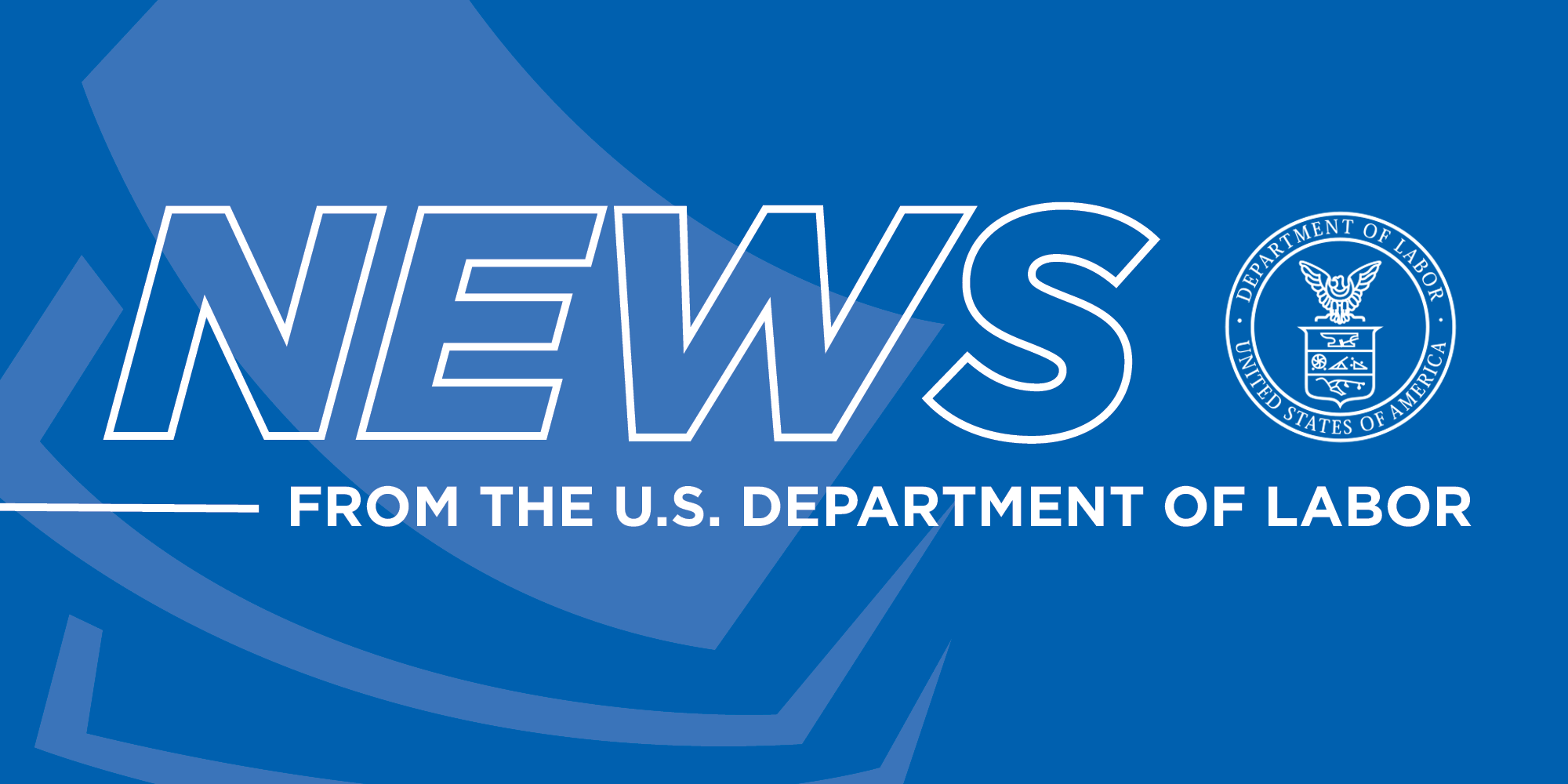US Department of Labor empowers states, localities to spur innovation across the workforce development system – U.S. Department of Labor (.gov)

Report on U.S. Department of Labor Guidance and its Alignment with Sustainable Development Goals
Introduction
The U.S. Department of Labor’s Employment and Training Administration has issued new guidance to state and local workforce development boards. This directive is designed to enhance the innovation and effectiveness of workforce service delivery. The guidance strategically aligns with several United Nations Sustainable Development Goals (SDGs) by promoting decent work, quality education, and economic growth through increased flexibility within the Workforce Innovation and Opportunity Act (WIOA) programs.
Core Objectives and Contribution to SDG 8: Decent Work and Economic Growth
The primary objective is to empower workforce boards to better prepare Americans for high-paying skilled jobs, directly supporting SDG 8, which promotes sustained, inclusive, and sustainable economic growth, full and productive employment, and decent work for all. The initiative seeks to achieve this through:
- Strategic utilization of the Secretary’s waiver authority to overcome statutory impediments.
- Increasing the flexibility of WIOA programs to meet local economic needs.
- Focusing on skills development for in-demand, “mortgage-paying” jobs to ensure economic security.
- Strengthening and modernizing the national workforce system to foster a future-ready workforce.
Enhancing SDG 4: Quality Education and Lifelong Learning
The guidance emphasizes the integration of various programs to create a comprehensive support system for job seekers, a key tenet of SDG 4 (Ensure inclusive and equitable quality education and promote lifelong learning opportunities for all). By encouraging the alignment of workforce development with career and technical education, the policy promotes:
- A holistic approach to skills acquisition and career readiness.
- The integration of human services programming to provide comprehensive support for learners and job seekers.
- Efficiency and maximized impact of public investments in education and workforce training.
Advancing Innovation and Reducing Inequalities (SDG 9 & SDG 10)
The policy addresses the need for an agile workforce system capable of responding to economic transformations driven by Artificial Intelligence (AI), which aligns with SDG 9 (Build resilient infrastructure, promote inclusive and sustainable industrialization and foster innovation). Concurrently, by targeting WIOA Youth and Adult and Dislocated Worker programs, the guidance supports SDG 10 (Reduce inequality within and among countries) by providing opportunities for vulnerable populations.
Key strategies include:
- Investing in new technologies and AI-powered capabilities to enhance service delivery.
- Allowing flexibility in funding to scale industry-driven training strategies.
- Ensuring that programs for youth and dislocated workers are effective in providing pathways to economic stability.
Strategic Implementation through Partnerships (SDG 17)
The guidance functions as a framework for strengthening partnerships between federal, state, and local entities, reflecting the principles of SDG 17 (Strengthen the means of implementation and revitalize the global partnership for sustainable development). The implementation relies on a collaborative approach where state and local boards are urged to proactively review policies and request waivers, thereby fostering a more responsive and cooperative governance structure for workforce development.
Conclusion
The Department of Labor’s guidance, detailed in Training and Employment Guidance Letter No. 05-25, represents a strategic effort to create a more innovative, responsive, and effective workforce development system. By emphasizing flexibility, technology, and programmatic integration, the initiative makes significant contributions toward achieving key Sustainable Development Goals, particularly those related to decent work, quality education, innovation, and reduced inequalities.
Analysis of Sustainable Development Goals (SDGs) in the Article
1. Relevant Sustainable Development Goals (SDGs)
-
SDG 4: Quality Education
The article’s focus on helping Americans “gain skills for in-demand, mortgage-paying jobs” and building a “future-ready workforce” directly aligns with SDG 4, which emphasizes inclusive and equitable quality education and lifelong learning opportunities, including technical and vocational training.
-
SDG 8: Decent Work and Economic Growth
The core theme of the article is strengthening America’s workforce system to promote “full and productive employment and decent work.” The initiative aims to prepare Americans for “High-Paying Skilled Trade Jobs” and support “American workers and businesses as the economy evolves,” which is central to SDG 8.
-
SDG 9: Industry, Innovation, and Infrastructure
The guidance encourages “investing in new technologies and AI-powered capabilities” and giving the workforce system the “agility to respond to a rapidly changing labor market.” This commitment to modernizing systems and adapting to technological transformation, such as the rise of AI, connects directly to SDG 9’s goal of building resilient infrastructure and fostering innovation.
-
SDG 10: Reduced Inequalities
By specifically mentioning programs for “WIOA Youth and Adult and Dislocated Worker,” the article implies a focus on providing opportunities for groups that may be vulnerable to economic shifts. Ensuring these populations have access to skills training and employment support contributes to the goal of reducing inequalities in economic outcomes.
-
SDG 17: Partnerships for the Goals
The article describes a multi-level governance partnership. The federal Department of Labor is providing guidance to “empower state and local workforce development boards.” This collaboration between different levels of government to achieve a common goal reflects the spirit of SDG 17, which promotes effective partnerships.
2. Specific SDG Targets
-
Target 4.4: By 2030, substantially increase the number of youth and adults who have relevant skills, including technical and vocational skills, for employment, decent jobs and entrepreneurship.
The article directly supports this target by promoting guidance to “Make America Skilled Again” and helping Americans “gain skills for in-demand, mortgage-paying jobs.” The entire initiative is designed to increase the number of workers with relevant skills for the modern economy.
-
Target 8.5: By 2030, achieve full and productive employment and decent work for all women and men, including for young people and persons with disabilities, and equal pay for work of equal value.
The focus on “High-Paying Skilled Trade Jobs” and “mortgage-paying jobs” aligns with the “decent work” aspect of this target. The inclusion of programs for “Youth and Adult and Dislocated Worker” shows an effort to achieve productive employment for various segments of the population.
-
Target 8.6: By 2020, substantially reduce the proportion of youth not in employment, education or training.
Although the target date has passed, the principle remains relevant. The article explicitly mentions that the guidance applies to “WIOA Youth” programs, which are specifically designed to address the challenge of youth unemployment and lack of training, thereby working towards the goal of this target.
-
Target 9.b: Support domestic technology development, research and innovation.
The article’s emphasis on giving the workforce system the “agility to respond to a rapidly changing labor market” driven by AI and “investing in new technologies and AI-powered capabilities” reflects a policy environment that supports innovation and adaptation to technological advancements within the domestic economy.
3. Mentioned or Implied Indicators
-
Indicator 4.4.1: Proportion of youth and adults with information and communications technology (ICT) skills, by type of skill.
This indicator is implied by the article’s recognition that “AI transforms the economy” and the need to invest in “AI-powered capabilities.” Measuring the success of these workforce programs would involve tracking the increase in workers who possess advanced digital and AI-related skills.
-
Indicator 8.5.2: Unemployment rate, by sex, age and persons with disabilities.
The effectiveness of the “WIOA Youth and Adult and Dislocated Worker programs” would be directly measured by changes in the unemployment rates for these specific demographic groups. A reduction in unemployment for youth, adults seeking new skills, and those who have been dislocated from their jobs would indicate progress.
-
Indicator 8.6.1: Proportion of youth (aged 15-24 years) not in employment, education or training (NEET).
This is a direct indicator for measuring the impact of the WIOA Youth programs mentioned in the article. The primary goal of such programs is to lower the NEET rate by providing young people with skills and pathways to employment.
Summary Table of SDGs, Targets, and Indicators
| SDGs | Targets | Indicators |
|---|---|---|
| SDG 4: Quality Education | Target 4.4: Increase the number of youth and adults with relevant skills for employment. | Implied Indicator 4.4.1: Proportion of youth and adults with ICT and AI-related skills. |
| SDG 8: Decent Work and Economic Growth |
Target 8.5: Achieve full and productive employment and decent work for all.
Target 8.6: Substantially reduce the proportion of youth not in employment, education or training. |
Implied Indicator 8.5.2: Unemployment rate for specific groups (youth, dislocated workers).
Implied Indicator 8.6.1: Proportion of youth not in employment, education or training (NEET). |
| SDG 9: Industry, Innovation, and Infrastructure | Target 9.b: Support domestic technology development, research and innovation. | Implied: Number of workforce programs incorporating new technologies and AI-powered capabilities. |
| SDG 10: Reduced Inequalities | Target 10.2: Empower and promote the social, economic, and political inclusion of all. | Implied: Enrollment and successful job placement rates for participants in WIOA Youth, Adult, and Dislocated Worker programs. |
| SDG 17: Partnerships for the Goals | Target 17.17: Encourage and promote effective public, public-private and civil society partnerships. | Implied: Number of state and local workforce boards implementing the new federal guidance. |
Source: dol.gov
What is Your Reaction?
 Like
0
Like
0
 Dislike
0
Dislike
0
 Love
0
Love
0
 Funny
0
Funny
0
 Angry
0
Angry
0
 Sad
0
Sad
0
 Wow
0
Wow
0


















































.jpg.webp?itok=0ZsAnae9#)

























